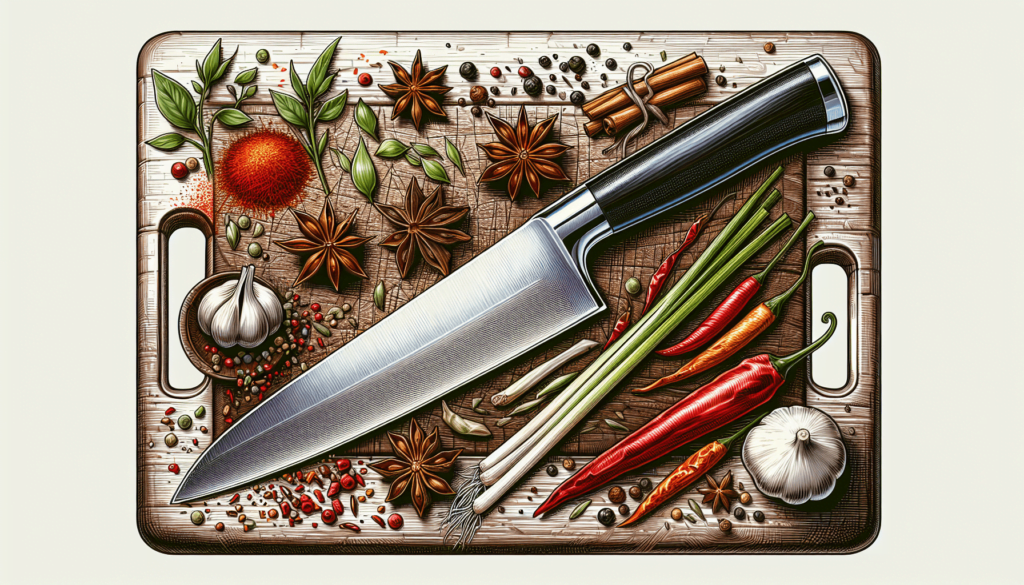Do Chefs Travel Around the World? Exploring Culinary Journeys. Have you ever wondered if chefs embark on journeys across the globe to hone their craft or gather inspiration? If you’re curious about the adventures that chefs undertake and how travel influences their culinary creations, you’re in the right place. In this article, we’ll delve into the fascinating world of culinary travels, exploring why and how chefs travel, what they learn along the way, and how their experiences shape your dining experiences.

Table of Contents
Introduction to Culinary Journeys
Overview
Chefs, much like artists, draw inspiration from the world around them. Traveling presents chefs with opportunities to experience diverse cultures, ingredients, and cooking techniques. In a globalized world, the culinary arts have become a dynamic tapestry woven from the threads of countless cultures. It’s no surprise, then, that many chefs travel the world in search of new flavors and methods.
The Importance of Travel for Chefs
Travel isn’t just about sightseeing or leisure for chefs; it’s an essential element of their growth and creativity. When chefs immerse themselves in different culinary traditions, they broaden their horizons and deepen their understanding of food. This hands-on approach to learning creates a richer and more varied culinary landscape, benefiting not only the chefs themselves but also the diners who enjoy their creations.
Historical Context of Culinary Travels
Historical Significance
Historically, the exchange of culinary practices has been pivotal. Marco Polo’s travels, for instance, are often credited with introducing pasta to Italy. The Spice Routes connected the East and West, facilitating the exchange of not just valuable spices but also culinary techniques. Chefs have always been at the forefront of such explorations, constantly pushing the boundaries of what we eat and how we perceive food.
Famous Culinary Explorers
Chefs like Auguste Escoffier and Julia Child were pioneers who not only brought new techniques and recipes to their homelands but also influenced global culinary trends. The stories of their travels continue to inspire modern chefs to explore and innovate.
Current Trends in Chef Travels
Modern-Day Culinary Explorers
Today, chefs travel extensively for various reasons—be it for culinary inspiration, to participate in food festivals, or to collaborate with other chefs. TV shows like “Chef’s Table” and “Parts Unknown” showcase how modern chefs like René Redzepi of Noma in Copenhagen and Massimo Bottura of Osteria Francescana in Modena frequently travel to unearth new ideas and inspiration.
Technology and Connectivity
Advancements in technology have made it easier for chefs to travel and stay connected with their teams back home. Social media platforms and blogging also allow chefs to document their culinary journeys, offering a glimpse into different cuisines, techniques, and cultures for aspiring chefs and food enthusiasts.
Key Concepts in Culinary Travels
Defining Culinary Tourism
Culinary tourism is a niche within the tourism industry focused on food as the main attraction. It involves not just eating local cuisine, but also engaging in food-related activities such as taking cooking classes, visiting local markets, or going on food tours.
Slow Food Movement
One key concept correlated with culinary travels is the “Slow Food Movement.” Initiated in Italy, this movement advocates for local food traditions, sustainable agriculture, and the fair treatment of food producers. Chefs who travel often engage with local food producers to understand the principles of this movement better.

Why Do Chefs Travel?
Gaining Inspiration and Knowledge
Travel allows chefs to gain firsthand experience and learn authentic techniques. For example, experiencing traditional Japanese sushi-making in Tokyo or understanding the spice blends in Indian cuisine can provide invaluable insights that can’t be gathered from a textbook.
Networking and Collaboration
Travel also offers networking opportunities. By attending international food festivals or culinary workshops, chefs get to meet industry leaders and exchange ideas. These interactions often lead to collaborations that inspire new culinary creations.
Sourcing Unique Ingredients
Chefs often travel to source unique, high-quality ingredients that aren’t available in their native countries. Truffles from Italy, saffron from Iran, or spices from Morocco can elevate a dish to entirely new levels.
Examples of Culinary Travels
Chef Anthony Bourdain
Anthony Bourdain is perhaps the most iconic figure when it comes to culinary travel. His shows “Parts Unknown” and “No Reservations” showcased his journeys to various countries where he explored local cuisines and traditions. His travels not only broadened his own culinary perspective but also educated viewers about different cultures.
René Redzepi
René Redzepi, head chef of Noma, frequently travels to uncover new ingredients and techniques. His culinary discoveries often make their way back to his restaurant, where they are incorporated into groundbreaking dishes that challenge conventional cooking norms.
Comparisons of Different Perspectives
Traditional vs. Modern Techniques
Chefs who travel often compare traditional culinary techniques with modern methods. For instance, the slow-cooked methods of rural France differ drastically from high-tech sous-vide techniques. By melding these perspectives, chefs create unique fusion cuisines that reflect a blend of different culinary heritages.
| Aspect | Traditional Cooking | Modern Cooking |
|---|---|---|
| Technique | Slow-cooked, hand-crafted | High-tech, precision tools |
| Ingredient Sources | Local, seasonal produce | Global, year-round availability |
| Focus | Flavor and texture | Innovation and presentation |
East vs. West Culinary Practices
The culinary practices of the East and the West also offer a rich field for comparison. While Eastern cuisines often emphasize balance and harmony, Western techniques might focus on boldness and creativity. These differences provide chefs with endless opportunities for innovation.
| Region | Eastern Practices | Western Practices |
|---|---|---|
| Cooking Methods | Steaming, braising, fermenting | Roasting, grilling, baking |
| Flavor Profiles | Subtle, balanced, umami-rich | Bold, savory, sweet |
| Food Philosophy | Harmony, balance, holistic well-being | Creativity, innovation, indulgence |
Impact of Culinary Travels
On Chefs
For chefs, travel serves as a form of continuing education. It helps them stay current with global food trends and techniques, thereby enhancing their culinary repertoire. The personal and professional growth they experience feeds back into their kitchens, elevating the entire dining experience.
On Diners
The impact on diners is equally significant. Diners get to experience dishes that are a melting pot of various cultures and techniques. Eating at such establishments becomes an educational experience, broadening the palate and making food more enjoyable and diverse.
Future Directions and Implications
Future Trends
Looking forward, the trend of culinary travel is expected to continue growing. With globalization, chefs will increasingly explore remote and underrepresented cuisines, enriching the global food landscape with new and diverse flavors.
Implications for the Culinary Industry
The implications for the culinary industry are profound. As chefs continue to bring back novel ideas and ingredients, the industry will evolve, offering diners an increasingly rich and varied tapestry of culinary experiences. For society, this could mean a greater appreciation for cultural diversity and a more profound understanding of global food practices.
Conclusion
To summarize, the journeys that chefs embark upon are far more than mere travel excursions; they are vital to the culinary arts. These journeys provide a treasure trove of inspiration, knowledge, and ingredients that chefs transform into innovative and delicious creations. This continuous exchange of ideas enriches the global culinary landscape, benefiting both chefs and diners alike. How do you think culinary travels have influenced your dining experiences?
Engage Further
If you’re intrigued by this topic, consider looking up additional resources on culinary tourism or exploring cooking shows that focus on culinary travels. Stay tuned, and you’ll find yourself better informed and perhaps even inspired to embark on your culinary adventures!
Credible Sources
- Books: “Kitchen Confidential” by Anthony Bourdain.
- Websites: Chef’s Table, Parts Unknown.
- Academic Articles: The International Journal of Gastronomy and Food Science.
